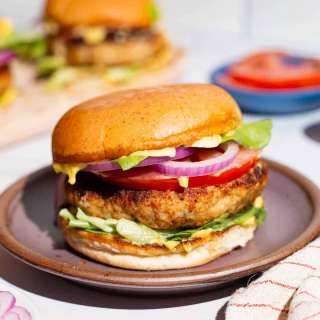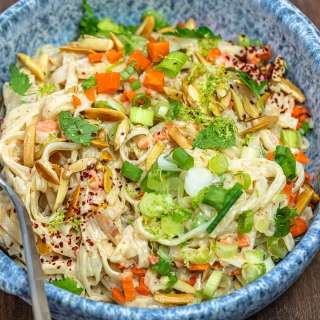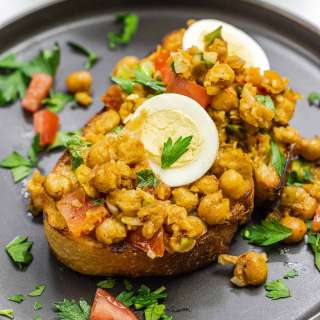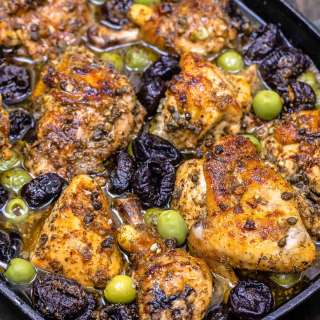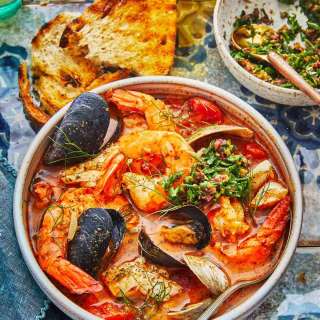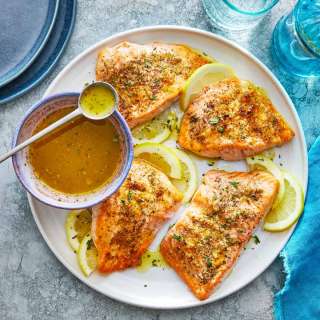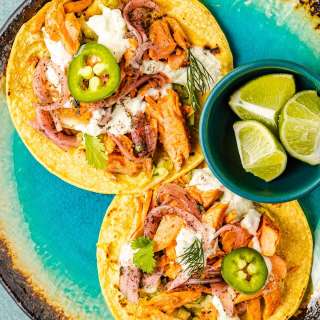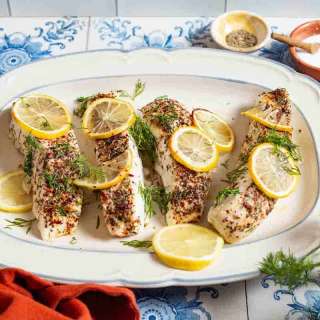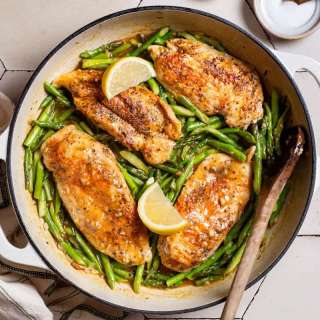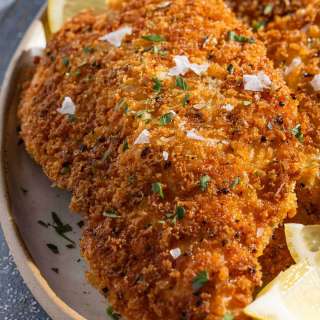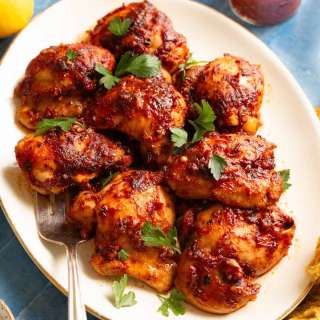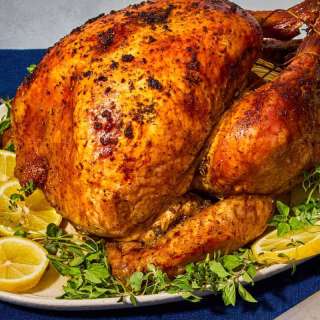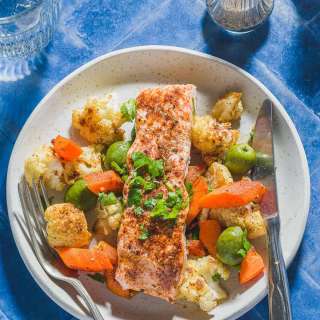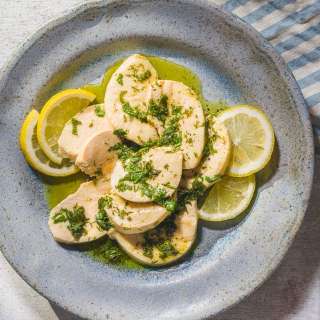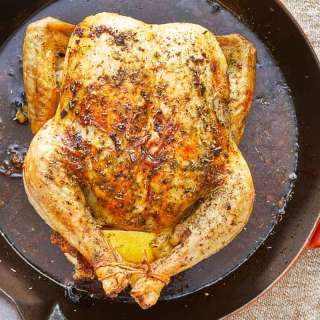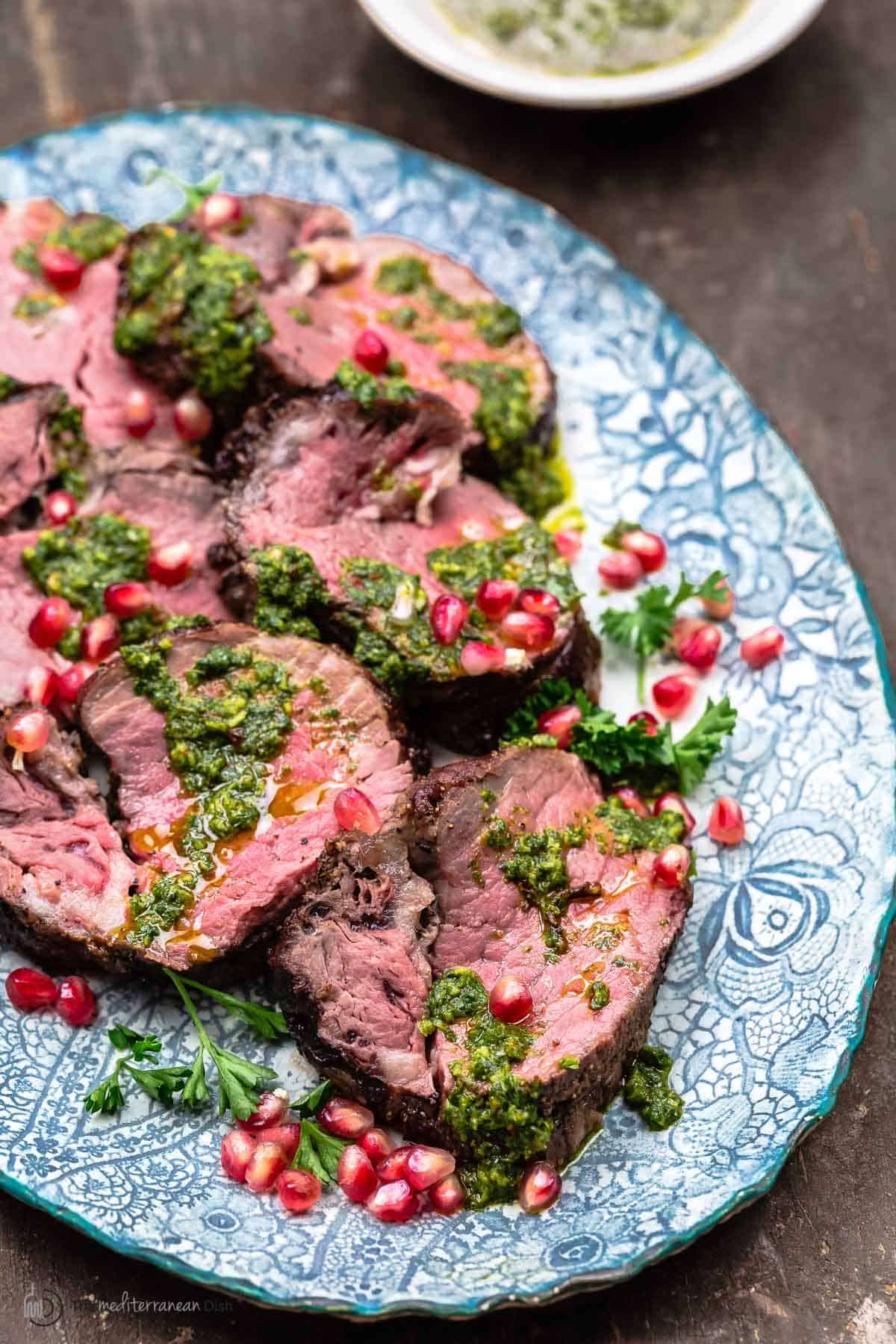
BEST Beef Tenderloin Roast Recipe
User Reviews
4.9
-
Prep Time
10 mins
-
Cook Time
3 hrs 10 mins
-
Air-Chilling Time
8 hrs
-
Servings
8 people
-
Calories
4661 kcal
-
Course
Main Course
-
Cuisine
American-Mediterranean Fusion

BEST Beef Tenderloin Roast Recipe
The easiest slow-roasted beef tenderloin recipe for juicy, melt-in-your-mouth results! Serve it with my herby chermoula sauce and a sprinkle of pomegranate seeds (both optional) for a pop of color and flavor. Beef tenderloin roast is best served medium-rare; see notes below for an internal temperature guide.
Ingredients
- 1 center-cut beef tenderloin, about 3 pounds, excess fat-trimmed (a little is okay for flavor, see note)
- kosher salt
- black pepper
- extra virgin olive oil
Optional Serving Suggestions:
- chermoula sauce (optional)
- pomegranate seeds, for garnish (optional)
Instructions
- The night before (if possible): Season and truss the tenderloin. Sprinkle the beef on all sides with kosher salt and black pepper (two five-finger pinches or so each). Tie kitchen twine pieces all down the tenderloin, leaving 1-inch between each piece. This helps the meat maintain its shape.
- Air dry the tenderloin in your fridge. Line a large sheet pan with an oven-safe wire rack. Put the tenderloin on top and refrigerate uncovered for one night. (If you don’t have the time, you can season it and allow it 30 minutes to 1 hour.)
- The day of: Position one oven rack in the middle of your oven and a second one at the top third, about 6-inches away from the broiler. Heat to 225°F.
- Slow-roast the tenderloin. Once the oven comes to temp, place the tenderloin, still tied with twine and on the rack-lined sheet pan, on the center rack of your oven. Roast until its internal temperature reaches 10 degrees below your desired final level of doneness. It will continue cooking under the broiler and as it rests. That means you should remove from the oven around 115°F for rare, 125°F for medium-rare (recommended). Start checking on it at the two hour mark, but this can take up to 3 hours depending on the size of your tenderloin.
- Make the golden crust. Once you've removed the tenderloin from your own, turn the broiler on. Brush the tenderloin on all sides with a thin layer of olive oil. Place the tenderloin back in the oven, this time on the top rack under the broiler. Use tongs to turn the tenderloin every few seconds until browned on all sides, about 2 minutes in total.
- Rest. Remove the roast from the oven and allow the meat to rest for about 15 to 20 minutes.
- Make the chermoula sauce (optional). While the roast rests, make the chermoula sauce (it only takes 5 minutes.)
- Slice. Once the meat has rested for at least 15 minutes, cut the twine off and discard. Slice the tenderloin crosswise into 1-inch-thick rounds, using the twine marks to guide you.
- Serve. Arrange the meat slices on a platter and drizzle with a bit of the chermoula sauce and garnish with pomegranate seeds for a festive pop of color!
Notes
- Too much fat will make the meat tough, but a little is okay–it will give the meat a nice flavor. The tenderloin has a tough, silvery membrane on the surface of the meat called the silver skin. To remove excess fat:
- Use the tip of your knife to cut into the silver skin, then slide your knife underneath it.
- Pull the skin back with one hand while using the knife with the other to remove it, angling the knife slightly upward to and cutting as close to the skin as possible.
- For best results, use the middle section of the tenderloin, known as “center-cut tenderloin” or “chateaubriand.” It a large, cylindrical piece that is uniform in shape and is easier to cook evenly than a whole tenderloin. (You can also ask your butcher for this cut).
- Beef tenderloin roast is best served rare or medium-rare or when its internal temperature after resting reaches 135 degrees F, which is how the recipe is written. However, you can allow more time in the oven if you like your meat more done.
- 125°F after the meat has rested. Remove the roast from your oven when its internal temperature reaches 115°F.
- 135°F after the meat has rested. Remove the roast from the oven when its internal temperature reaches 125°F.
- 145°F after the meat has rested. Remove the roast from the oven when its internal temperature reaches 135°F.
- 155°F after the meat has rested. Remove the roast from the oven when its internal temperature reaches 145°F.
- Don’t skip this step–it
- allows the juices to reabsorb so the meat is more flavorful.
- Once cooled, you can store the leftovers in the fridge in a tight-lid container for up to 4 days. Enjoy it at room temperature or reheat briefly in a medium-heated oven or on the stovetop in a skillet with a tiny bit of extra virgin olive oil.
- to browse quality Mediterranean ingredients including
- olive oils
- ,
- honey
- ,
- jams
- , and
- spices
- .
On trimming: Too much fat will make the meat tough, but a little is okay–it will give the meat a nice flavor. The tenderloin has a tough, silvery membrane on the surface of the meat called the silver skin. To remove excess fat:
Use the tip of your knife to cut into the silver skin, then slide your knife underneath it. Pull the skin back with one hand while using the knife with the other to remove it, angling the knife slightly upward to and cutting as close to the skin as possible.
- Use the tip of your knife to cut into the silver skin, then slide your knife underneath it.
- Pull the skin back with one hand while using the knife with the other to remove it, angling the knife slightly upward to and cutting as close to the skin as possible.
- Which beef cut to choose? For best results, use the middle section of the tenderloin, known as “center-cut tenderloin” or “chateaubriand.” It a large, cylindrical piece that is uniform in shape and is easier to cook evenly than a whole tenderloin. (You can also ask your butcher for this cut).
- How do you know when your roast is ready? Beef tenderloin roast is best served rare or medium-rare or when its internal temperature after resting reaches 135 degrees F, which is how the recipe is written. However, you can allow more time in the oven if you like your meat more done.
Beef Tenderloin Temperature Guide:
Rare: 125°F after the meat has rested. Remove the roast from your oven when its internal temperature reaches 115°F. Medium-Rare (recommended): 135°F after the meat has rested. Remove the roast from the oven when its internal temperature reaches 125°F. Medium: 145°F after the meat has rested. Remove the roast from the oven when its internal temperature reaches 135°F. Medium-Well: 155°F after the meat has rested. Remove the roast from the oven when its internal temperature reaches 145°F.
- Rare: 125°F after the meat has rested. Remove the roast from your oven when its internal temperature reaches 115°F.
- Medium-Rare (recommended): 135°F after the meat has rested. Remove the roast from the oven when its internal temperature reaches 125°F.
- Medium: 145°F after the meat has rested. Remove the roast from the oven when its internal temperature reaches 135°F.
- Medium-Well: 155°F after the meat has rested. Remove the roast from the oven when its internal temperature reaches 145°F.
- Meet needs rest too! Don’t skip this step–it allows the juices to reabsorb so the meat is more flavorful.
- Leftovers and storage. Once cooled, you can store the leftovers in the fridge in a tight-lid container for up to 4 days. Enjoy it at room temperature or reheat briefly in a medium-heated oven or on the stovetop in a skillet with a tiny bit of extra virgin olive oil.
- Visit our shop to browse quality Mediterranean ingredients including olive oils, honey, jams, and spices.
Nutrition Information
Show DetailsNutrition Facts
Serving: 8people
Amount Per Serving
Calories 4661 kcal
% Daily Value*
| Calories | 466.1kcal | 23% |
| Protein | 30.9g | 62% |
| Fat | 37.1g | 57% |
| Saturated Fat | 15.2g | 76% |
| Polyunsaturated Fat | 1.5g | 9% |
| Monounsaturated Fat | 15.8g | 79% |
| Cholesterol | 119.1mg | 40% |
| Sodium | 228.7mg | 10% |
| Potassium | 517.1mg | 11% |
| Calcium | 12mg | 1% |
| Iron | 4mg | 22% |
* Percent Daily Values are based on a 2,000 calorie diet.
